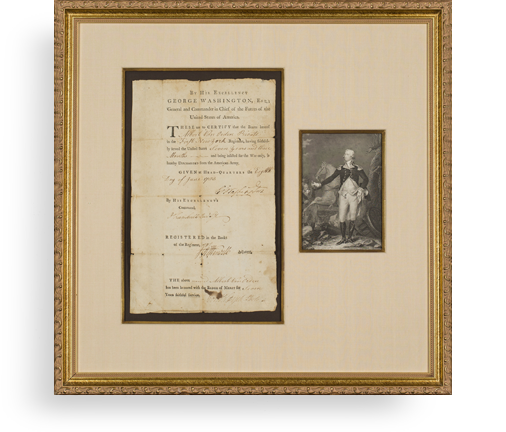Sold – Governor John Hancock Appoints a Noted State Assemblyman Justice of the Peace

Timothy Tufts was born in 1735 and resided in Charlestown, Mass. He was a prominent man in public affairs, was frequently chosen moderator of the town meeting, and was a selectman for most of the years between 1780 and 1792. Later he served as representative to the General Court (the Massachusetts assembly)....
Timothy Tufts was born in 1735 and resided in Charlestown, Mass. He was a prominent man in public affairs, was frequently chosen moderator of the town meeting, and was a selectman for most of the years between 1780 and 1792. Later he served as representative to the General Court (the Massachusetts assembly). The book “Historic Leaves”, volume 1, April, 1902 – January, 1903, on the Tufts University website, relates that he was always spoken of in the records as “Timothy Tufts, Esquire,” and “His commission as Justice of the Peace, signed by Governor John Hancock, may be still seen hanging in the sitting-room of the old house.”
Document Signed, 18 1/2 by 11 1/2 inches, Boston, February 18, 1782, appointing “Timothy Tufts, Esquire of Charlestown to be one of the Justices to keep the peace in the county of Middlesex…for the term of seven years, if he shall during that time behave while in the same office.” This is the very same document referenced in the 1903 book as having a century ago resided in the Tufts family home. We just recently acquired it from a Tufts descendant, and it has never before been offered for sale.
In the years from 1780 to 1785, Hancock served his first term as governor of Massachusetts. Documents from that first term are much less common than those from his second from 1787-1793.

Frame, Display, Preserve
Each frame is custom constructed, using only proper museum archival materials. This includes:The finest frames, tailored to match the document you have chosen. These can period style, antiqued, gilded, wood, etc. Fabric mats, including silk and satin, as well as museum mat board with hand painted bevels. Attachment of the document to the matting to ensure its protection. This "hinging" is done according to archival standards. Protective "glass," or Tru Vue Optium Acrylic glazing, which is shatter resistant, 99% UV protective, and anti-reflective. You benefit from our decades of experience in designing and creating beautiful, compelling, and protective framed historical documents.
Learn more about our Framing Services








































































































